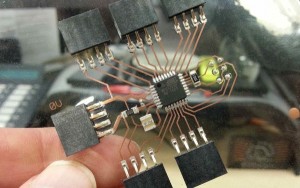In the last ten years, the technology for manufacturing lightweight, flexible PCBs has made huge progress. Lightweight flex circuits are usually associated with materials like Kapton. The use of those materials is typically limited to high-value applications due to price. Fast forward to 2015, and the landscape has changed dramatically.
Printed electronics makes the news on a regular basis. We hear about breakthroughs in printing semi-conductors, organic photocells, or triboelectric fabric. What often goes unnoticed is that the underlying circuits – manufactured on low-cost flexible substrates with copper traces – have quietly moved from the lab to the production floor. Printed copper flexible circuits are now routinely manufactured by the kilometre in a reel-to-reel process. As production volumes go up, costs come down.
Printed copper
Printed flexible circuits are a key element in delivering the ultimate goal of complete printed flexible electronics. Today they are used to create hybrid circuits: flexible substrates carrying conventional SMT devices. Because the tracks are copper we can solder SMT devices using low temperature tin-bismuth solder. Components can be hand-soldered or assembled using pick-and-place machines and soldered in a reflow oven. We see these circuits used for everything from RFID and NFC applications to medical sensors and car seat heaters.
The starting point for this process is inkjet printing onto the substrate. Printing from CAD files means there are no tooling costs, and printing 10 patterns or 10,000 uses the same process and equipment. As the process is reel-to-reel there is no practical limit to the length of the printed circuit.
For more Details: PCB future is lightweight, low-cost, and flexible: Product how-to

